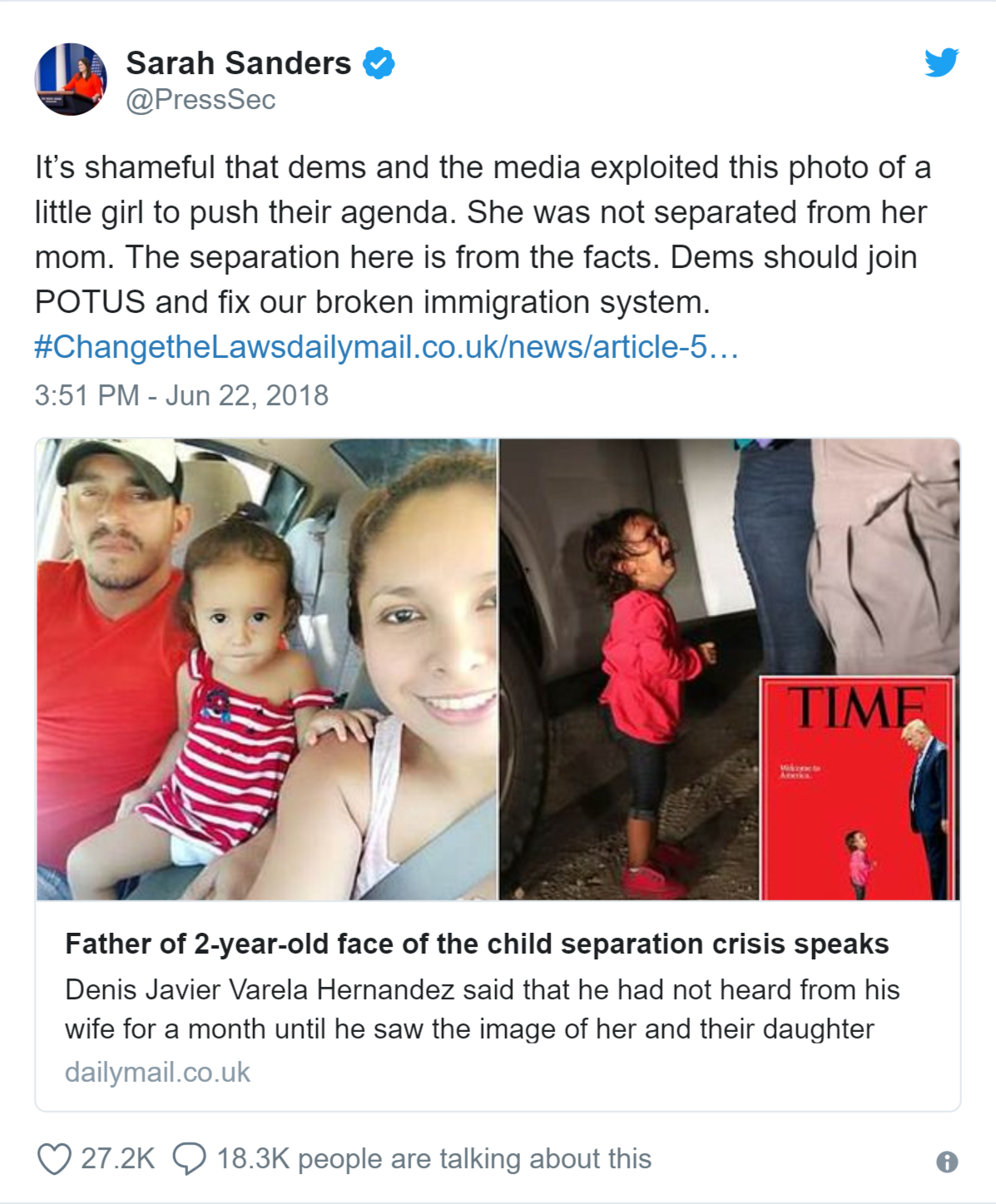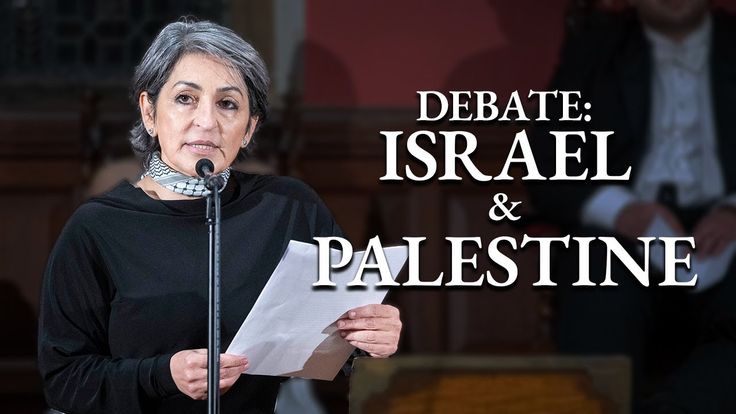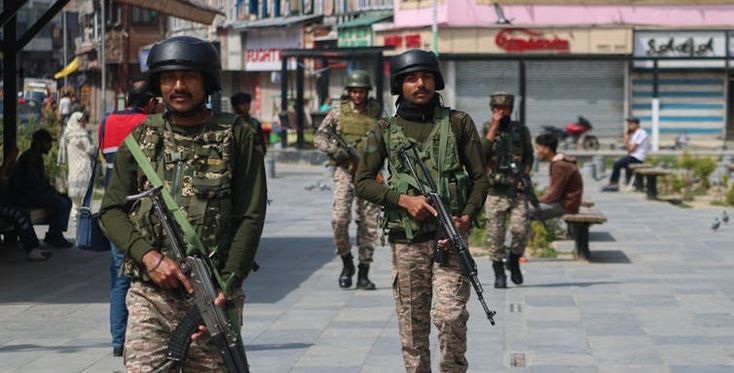
Bergensia editor; the picture still illustrates the essence of the case, and US Government has not been willing to allow the press to witness the camps where girls are being kept.
Catesby Holmes, The Conversation
Since President Donald Trump ordered border officials to criminally prosecute all people caught trying to cross the U.S.-Mexico border in May, approximately 2,000 children of Central American migrants have been forcibly separated from their parents.
Video footage of distraught children isolated in detention centers has provoked outrage worldwide. The United Nations’ human rights chief called the policy child “abuse,” and Mexico says the U.S. is violating human rights.
The grim logic behind Trump’s family separation policy: If would-be migrants know that the U.S. will take away their children, they may decide it’s safer to stay home.
Such thinking ignores some inescapable dangers that each year compel hundreds of thousands of Central Americans to flee their jobs, homes and families and cross Mexico by foot to reach the U.S.
Why make this perilous journey? Here, immigration experts explain that many Central American migrants are what’s called forced migrants. They are escaping conflict, generalized violence and targeted persecution – not traveling by choice.
1. Record-high homicide rates
“An increasing number of individuals are now arriving at the U.S. southwest border because of crime, violence and insecurity in Central America,” says Jonathan Hiskey of Vanderbilt University.
Hiskey’s research shows that pure fear drives many migrants to leave home.
With 60 murders per 100,000 people in 2017, El Salvador was the deadliest place in the world that was not at war. Almost 4,000 people were killed there last year.
Honduras’ murder rate has dropped markedly in recent years, but with 42.8 murders per 100,000 people in 2017, it is still one of the world’s most dangerous places.
People who’ve been victims of crime multiple times are most likely to emigrate, Hiskey says.
2. Sexual and domestic abuse
Such migrants would typically surrender at the border and request asylum, explains immigation lawyer Sabi Ardalan. They are now being arrested before they can surrender.
“International refugee law, which the U.S. has incorporated into domestic law, requires signatory countries to offer protection to people who demonstrate a well-founded fear of certain kinds of severe harm in their home countries,” she says.
Their persecution must be related to race, religion, nationality, political opinion or their particular social group.
Under international law, women who experience severe sexual or physical violence at home and who live in countries that – like El Salvador, Guatemala and Honduras – cannot or will not protect them may qualify as members of a “particular social group” that warrants protection, Ardalan explains.
So might people who are persecuted for their sexual orientation or gender identity.
Today, many countries recognize the “unique torments” that many women face worldwide,“ says Ardalan.
The U.S. used to. On June 11, Attorney General Jeff Sessions upended decades of legal precedent by asserting that women escaping domestic abuse are not eligible for asylum.
3. Gang violence
Other Central Americans flee home because of unbridled gang violence.
The gang MS-13 first appeared in Los Angeles during the 1980s, says Florida International University professor José Miguel Cruz. In the early 2000s, the group expanded into Central America. As rival Salvadoran gangs from LA did likewise, crime across Central American cities increased.
Police in El Salvador, Guatemala and Honduras began to crack down.
“In El Salvador, the spiritual homeland of MS-13, the police arrested nearly 31,000 young people from 2003 to 2005,” Cruz writes.
As Central American gangs grew stronger, in part by recruiting members from jail, they began fighting to expand their territorial control. Beginning in 2010, these turf wars contributed to an astronomical rise in violence across the region.
“El Salvador went from a homicide rate of 36.9 murders per 100,000 inhabitants in 2000 to 64.4 in 2006 and 70.9 in 2009,” writes Cruz. “The same thing happened in Honduras and Guatemala, where the rivalry between MS-13 and the Eighteenth Street Gang descended into a succession of local street wars.”
4. Why can’t their own governments protect them?
In many ways, Cruz says, Central America’s uncontrolled gang violence is just “a symptom of a far more critical issue plaguing the region – namely, corruption.”
Prosecutors in Honduras and El Salvador have discovered numerous financial links between MS-13 and high-ranking government officials.
“They shield criminal organizations in exchange for economic support and political backing in gang-controlled barrios,” writes Cruz. These illicit relationships have “shattered most efforts to build the kinds of criminal justice institutions necessary to support a democratic society.”
Indictments for government corruption and murder are both rare in Central America. As a result, criminals can extort, threaten and kill with impunity. In 2014, 99 percent of all murders in Honduras went unsolved.
President Trump has frequently justified his administration’s crackdown on immigrants by asserting that migrants are “criminals.” In fact, in many cases, they are the criminals’ victims.
5. Do immigrants hurt the US economy?
Trump has also claimed that most people crossing the U.S.-Mexico border are “unskilled” economic migrants intent on “taking [Americans’] manufacturing jobs” or “taking our money.”
That’s false, says Raquel Aldana, a law professor at the University of California, Davis.
“Most studies on the fiscal impact of U.S. immigration conclude that immigrant contributions have been positive to the overall U.S. economy,” Aldana says.
That includes the kind of low-wage workers who typically arrive from Central America. Such immigrants “do the difficult work of picking our fruit, cleaning our houses, cutting our lawns and caring for our children and elderly,” Aldana says.
She believes Trump’s perspective that certain migrants are “undeserving” of entry to the United States “distorts the facts.”
“Nearly all U.S. citizens would likely be undeserving of U.S. immigration” if the Trump administration’s harsh new rules applied to them.
![]() Editor’s note: This article is a roundup of stories from The Conversation’s archive.
Editor’s note: This article is a roundup of stories from The Conversation’s archive.
Catesby Holmes, Global Affairs Editor, The Conversation
This article was originally published on The Conversation. Read the original article.




25 Comments
Pingback: jazz music
Pingback: Construction de villas
Pingback: Thai food nyc
Pingback: บาคาร่า lsm99
Pingback: aksara 178
Pingback: spin238
Pingback: url
Pingback: บอลยูโร 2024
Pingback: joker2499
Pingback: ทรรศนะบอลวันนี้
Pingback: namo333
Pingback: บริษัทรถเช่า
Pingback: phishing links
Pingback: luggage storage bangkok
Pingback: 7 plus สล็อต
Pingback: m1a scout
Pingback: 3플3
Pingback: เช่ารถตู้พร้อมคนขับ
Pingback: Microgaming
Pingback: ชุดยูนิฟอร์ม
Pingback: โปรโมชั่นของ ยูฟ่า191
Pingback: ไฮเบย์
Pingback: bangkok tattoo
Pingback: trovent
Pingback: สกรีนแก้ว